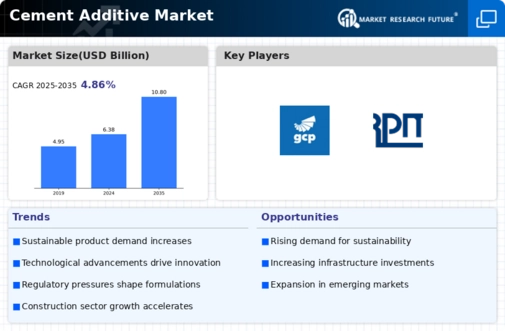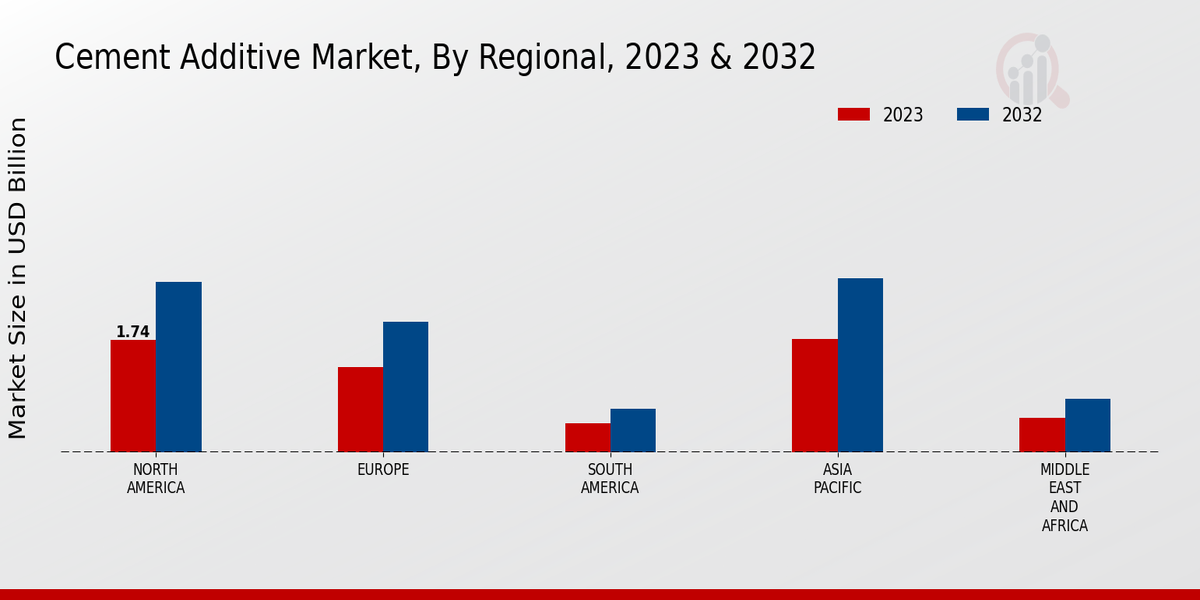Cement Additive Market Summary
The Global Cement Additive Market is projected to grow from 6.38 USD Billion in 2024 to 10.75 USD Billion by 2035, indicating robust growth opportunities.
Key Market Trends & Highlights
Cement Additive Key Trends and Highlights
- The market is expected to expand at a compound annual growth rate (CAGR) of 4.89 percent from 2025 to 2035.
- By 2035, the market valuation is anticipated to reach 10.8 USD Billion, reflecting increasing demand for innovative construction solutions.
- in 2024, the market is valued at 6.38 USD Billion, highlighting the current investment potential in cement additives.
- Growing adoption of sustainable construction practices due to environmental regulations is a major market driver.
Market Size & Forecast
| 2024 Market Size | 6.38 (USD Billion) |
| 2035 Market Size | 10.75 (USD Billion) |
| CAGR (2025-2035) | 4.86% |
Major Players
Sika AG, BASF SE, Evonik Industries AG, Wacker Chemie AG, GCP Applied Technologies, WR Grace Co, Celanese Corporation, Dow Chemical, Pidilite Industries, RPM International Inc., Fosroc International Limited, Nitto Denko Corporation, Chryso Southern Africa, Parex Group, The Euclid Chemical Company, Mapei S.p.A.














Leave a Comment